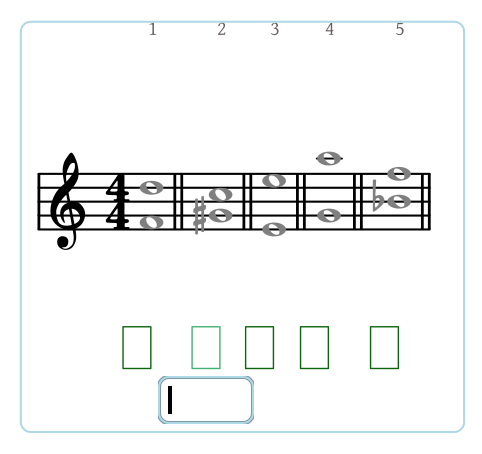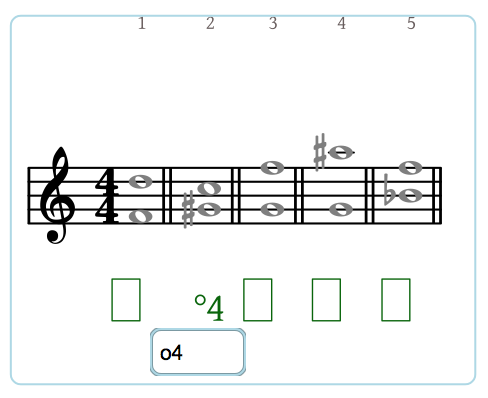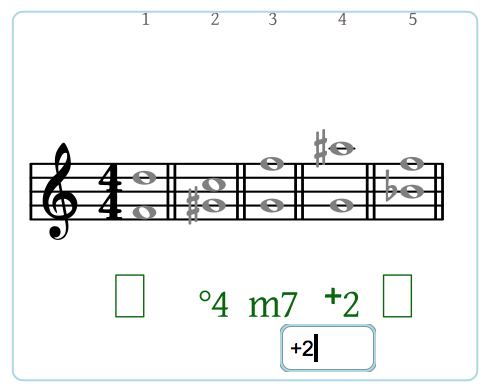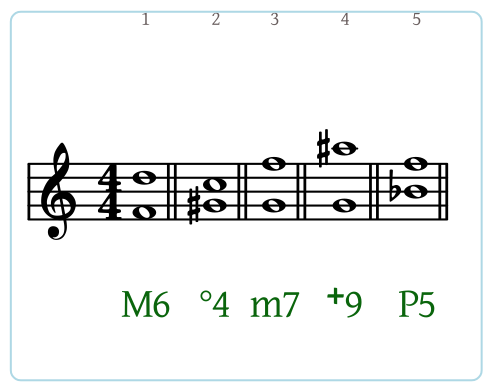Table Of Contents
Typing Intervals in the Theory Line
Here is an example of what intervals look like when they are engraved in the theory line:
To enter an interval you type text input that defines the interval's quality and size.
Interval Quality
The interval quality represents the type of interval being described:
interval quality: diminished minor major perfect augmented text input: o, d m M p +, a
- For a diminished interval, type the lower-case letter 'o' or a lower or upper-case 'd'.
- For a minor interval, type the lower-case letter 'm'.
- For a major interval, type the upper-case letter 'M'.
- For a perfect interval, type a lower or upper-case 'p'.
- For an augmented interval, type the plus sign '+' or a lower or upper-case 'a'.
Note that the diminished and augmented qualities will always be engraved as ° and + in the theory line.
Interval Size
The interval size is the number of lines and spaces the interval spans, starting with 1 for the unison:
interval size: unison second third fourth fifth sixth seventh octave ninth tenth ... text input: 1 2 3 4 5 6 7 8 9 10
Numbers up to and including the octave are called simple intervals and intervals larger than the octave are compound intervals. For convenience, when you are asked to identify a compound interval you can type either the compound symbol or its simple version. For example, a written major tenth can be correctly identified in the theory line by typing either M10 or M3. However, the reverse is not true: if the written interval is a minor second it is incorrect to identify it as m9, the only correct answer is m2.
Typing in the Theory Line
To type intervals in an interval assignment do the following:
- Click on an entry box to open the theory line editor just beneath the theory line.

- Type the quality and size of the interval as described above into the theory line editor. As you type, your input will be engraved in the theory line in proper music notation.

- When you are finished typing, press Return or use the Tab key to move to the next entry in the theory line.

